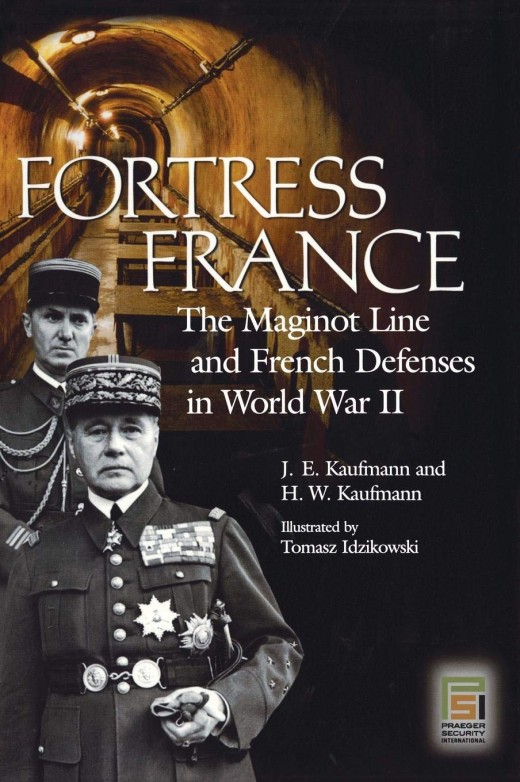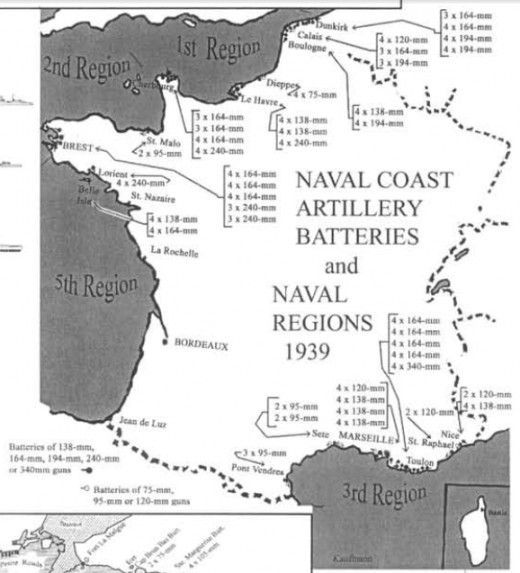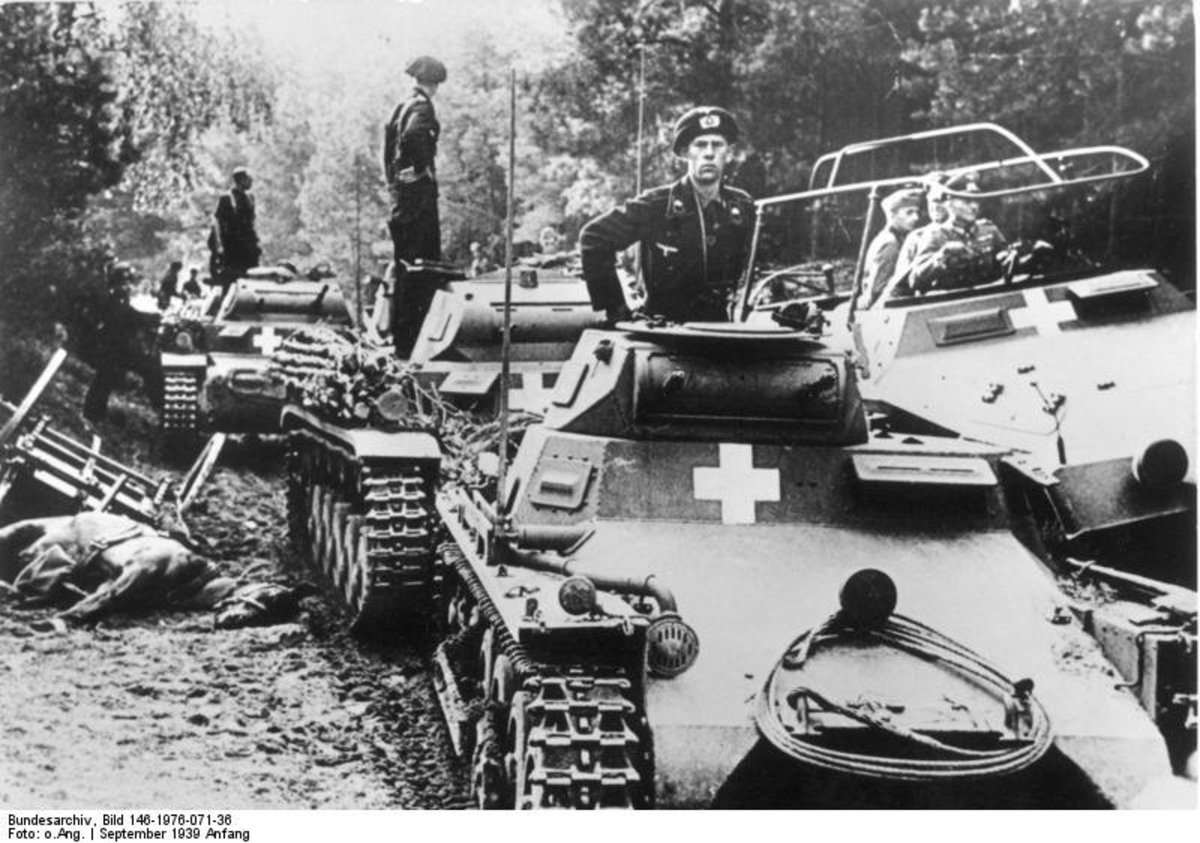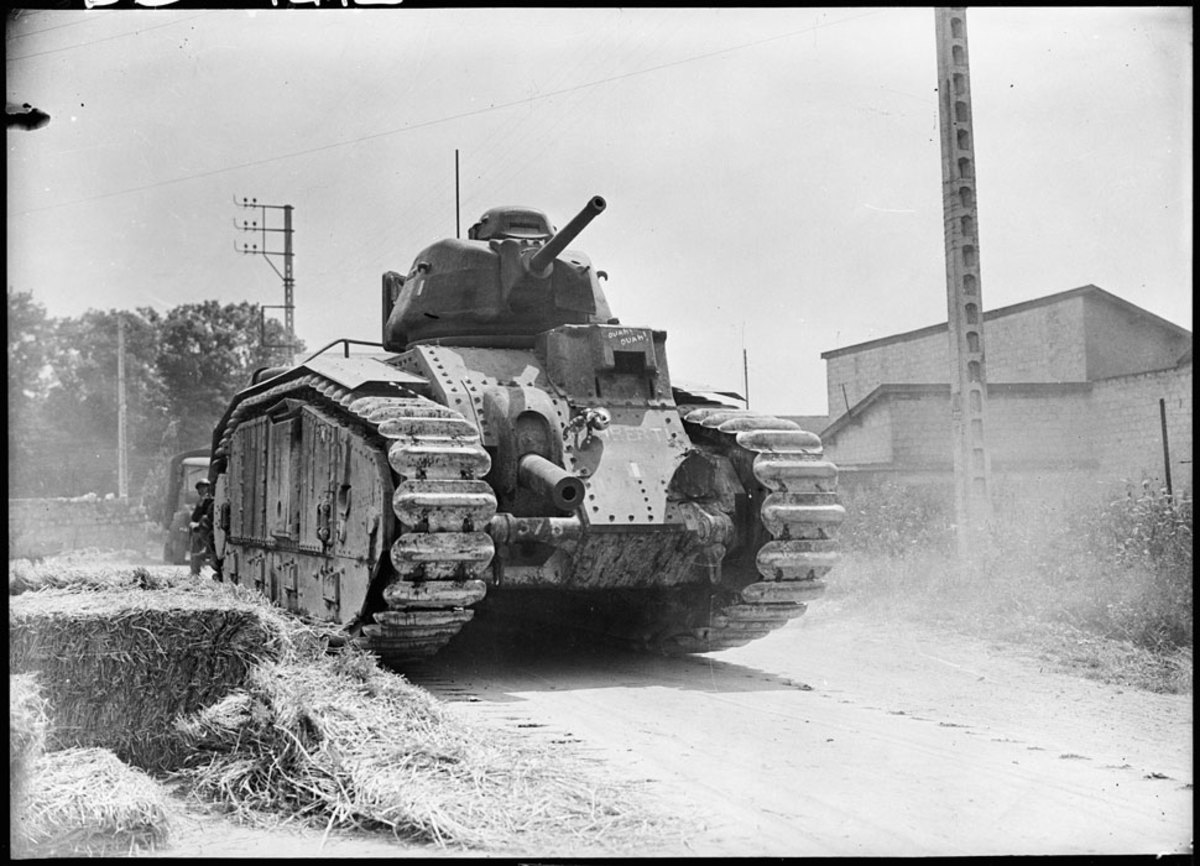Fortress France Book Review : An Excellent, if Specialized, Engineering Treatise

The Maginot Line is the victim of much false information and myths which have been spread and propagated about it. Unfortunately, books upon the subject are not always themselves very good in managing to themselves dispel these stories and provide for an accurate recounting of the line. To the Maginot Line for example, is an extremely poor primer into the reasons behind the line. Fortunately, the current book under discussion, Fortress France, the Maginot Line and French Defenses in World War II by J.E Kaufmann and H.W. Kaufmann is a much better work, and forms an excellent overall look at French fortifications as a whole during the Second World War.
An initial chapter entitled "Marching to the Wrong Tune" lays out some of the problems and errors which the French made with their doctrinal choices and decision making, covering war planning, various French military thinkers, the triumph of the idea of defense, and various reasons behind the construction of the Maginot Line.
Chapter 2, actually entitled "The Maginot Line", discusses the actual technical features behind the Maginot line forts, opening with how they were arranged - with a network of fortified sections laid out by the CORF, the French commission tasked with fortress design, and then with diagrams and text about the actual French fortifications, concentrated on ouvrages and their weapons.
Chapter 3, "Closing the Gaps from the North Sea to the Mediterranean", discusses some of the elements of the Maginot line beyond the principal forts, the ouvrages,and then launches into a section on the Alpine line against the Italians, the Rhine; Saar gap, the Belgian border and fortifications around Paris, Mareth line in Tunisia, and also the construction, cost, and garrisoning of the fortifications.
Chapter 4 takes an unusual turn for the average French book about fortifications, moving beyond the Maginot line and in "Sea and Air Defenses", discussing first the general state of the French navy, and then the fortifications of its principal bases and coastal defenses; Air defense principally focuses upon the aircraft the French had and some organizational aspects.
Chapter 5, "The March to Defeat", includes a good section upon the broader public perception of the Maginot Line, including the inaccurate images of it spread by French propaganda and various writers. It also covers the broader state of the French army and planning for the war, and the Maginot Line's usage up to the actual German invasion.
Chapter 6, "The French Army and the Maginot Line at War", is the chapter for the actual combat usage of the long prepared fortifications. Here once more it extends beyond the simple fortification aspect with armor doctrine, the preparedness of the French army as a whole, and the poor nature of the French command. Most however, is devoted to the fighting on various Maginot line positions, mostly in the North where German assaults, with exceedingly heavy artillery and aircraft support, succeeded in seizing a variety of minor forts, although never taking the major fortifications of the line which surrendered with honor - although their troops were not spared captivity. In the south, the Italian assault failed entirely.
A very brief conclusion simply recaps previous elements.

As far as an engineering history and technical study goes of French fortifications, this book is superlative. It describes French fortifications in the Maginot Line, Alpine Line, and Mareth Line, as well as coastal fortifications, with thoroughly excellent levels of detail but is nevertheless highly understandable, the book overall being brief enough to not drag. Weapons, installations, construction history of the forts: all are very well covered, and so for fulfilling its direct history and role, the book succeeds quite brilliantly.
There are a certain litany of errors which scatter the book however, which do raise some suspicions about the accuracy of individual parts. For example, it provides false numbers for the production of Char D2 tanks, several hundred more than were actually produced, at one point cites French 280mm mortars as only have 20 kilogram shells, and claims the French battleship Richelieu as being equipped with 16 inch guns. While insignificant and petty, errors like these getting through editing in a book heavily reliant on facts, figures, and statistics is disconcerting. Most figures otherwise seem to check out, but nevertheless it undermines the credibility of a seemingly excellent book. Another weakness is that some of the photos, particularly those of a technical nature (such as the schematics of the deployment of coastal defenses around France) are rather small and hence hard to read. But there are plentiful photos and they are as a rule well chosen and do a good job to accompany the work - nearly half of the book in fact is composed of diagrams, drawings, and photos!
It is very welcome that there is some discussion of the French coastal defense scheme and air defenses. However, these parts are much less complete than the rest. Coastal defense includes rather little discussion of why the French built their coastal defense: while this may seem evident, the British neglected their own coastal defense, and the French navy in the period could have chosen alternate strategies, such as more small craft and aircraft. In the Atlantic, it faced little threat. No other powers other than the Soviet Union and the United States so far as I know, went so far during the Interwar period to entrench capital ship gun turrets as coastal defense batteries in its metropole, so this too requires some explanation. What did the French hope to achieve with their coastal defense and what were the alternatives they considered? The air defense section is even more incomplete, with very little focus on what one would expect as being the air defense component of a book about fortifications, anti-aircraft guns, detection systems, and bunkers and the civil defense system. Furthermore in regards to the total number of French aircraft it is similarly lacking. This makes it an almost non-entity in what is otherwise a very good book. Finally, there is limited information available upon the actual tactical employment and doctrine exercised by the Maginot Line and associated fortifications in 1940: the focus is very much upon their construction but there is little to cover the fighting which they saw.
Concise, but with sufficient detail to cover the subject, well structured, well organized, and well laid out on a variety of diverse subjects covering both conventional French land fortifications and French naval fortifications (which are little discussed elsewhere), this book reflects a very good engineering study upon the Maginot Line, although it is limited to largely that. While it could have provided some additional detail about philosophies underlying construction and relationship to doctrine, and there are a plethora of small errors, it is overall a thoroughly excellent book about French fortifications, and well recommended reading to understand their aspect of the Battle of France, albeit it intended for an academic audience and little needed for those desiring simple pop history. Its specialization upon the subject is the main flaw, for it could have easily been much more.
© 2019 Ryan Thomas









